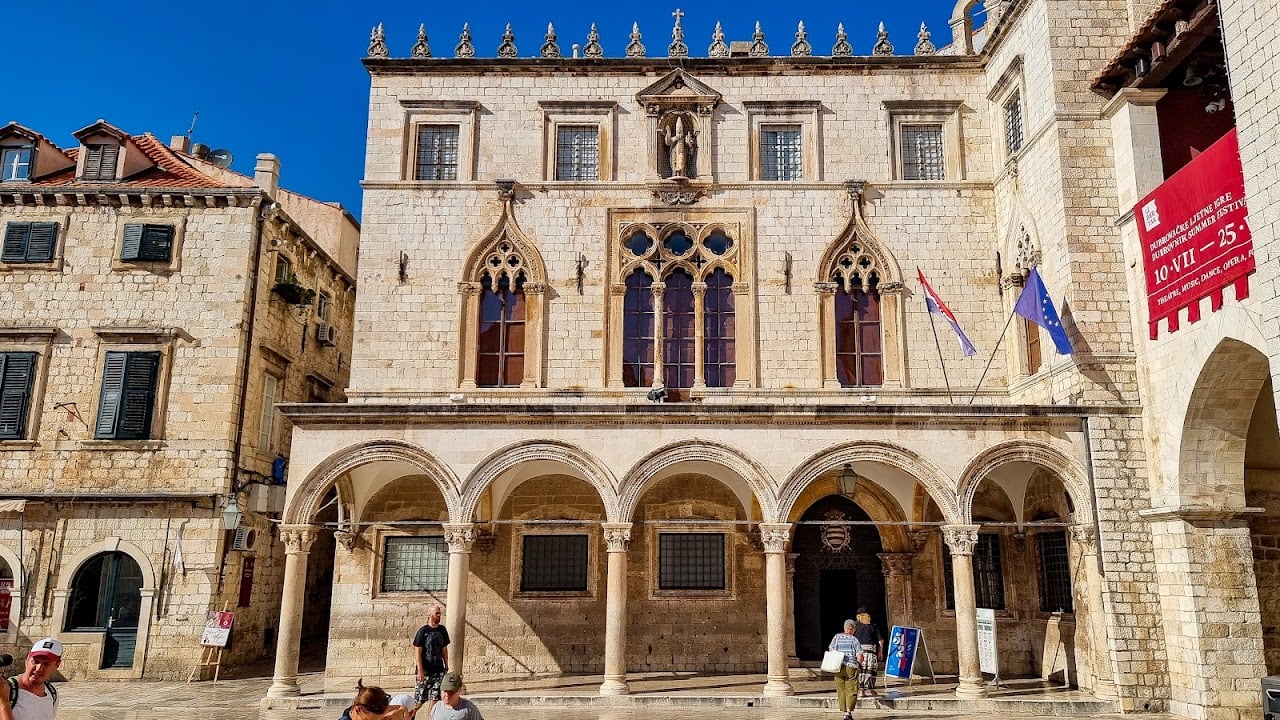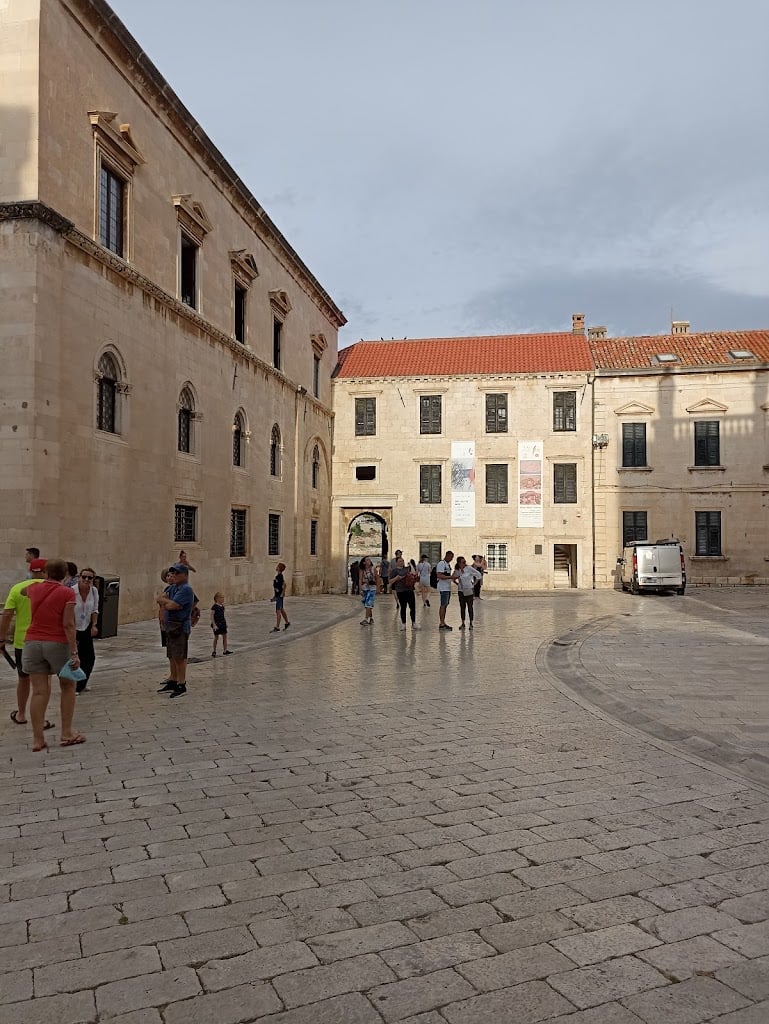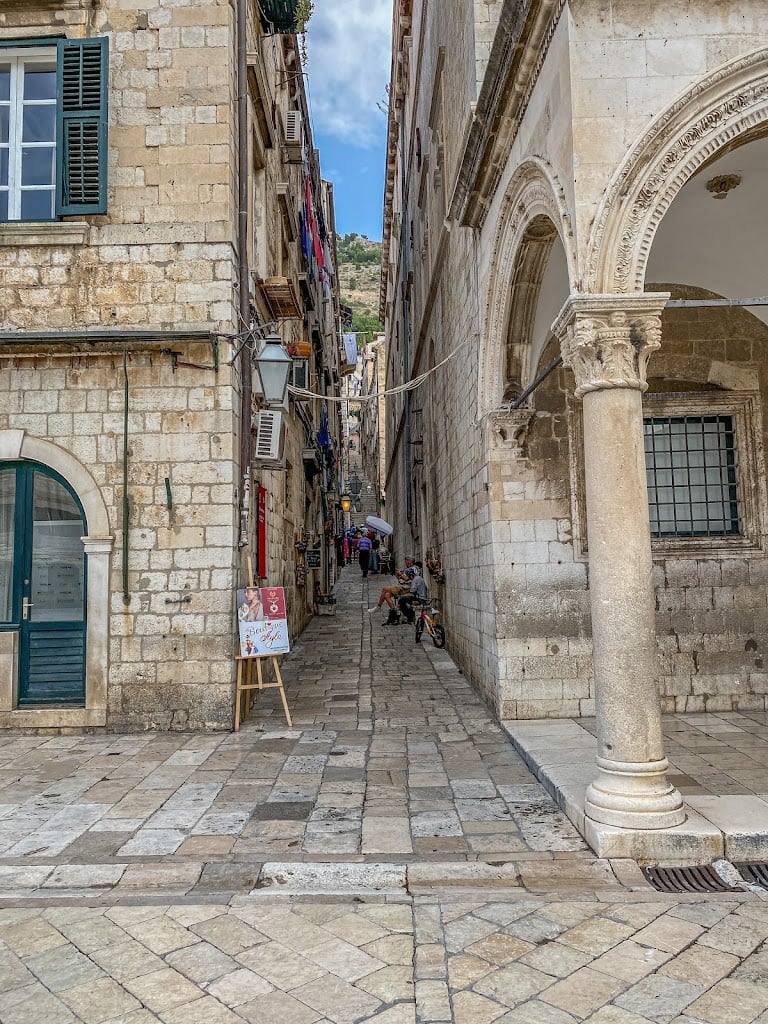Sponza Palace





Ask ThatchGPT
Suggest a local expert to plan my trip
Suggest an unique itinerary for my Dubrovnik trip
What foods do Dubrovnik locals eat
What are some true hidden gems in Dubrovnik
Help me brainstorm trip ideas for Dubrovnik
Help me plan a family-friendly trip to Dubrovnik
What people say
Pedro Pereira
Available for hire
"At the end of Placa (Stradun) street, beside Luža, on the left side of the square centered with the Orlando column, the monumental Gothic-Renaissance Sponza Palace finds its rightful place. Sponza is one of the most beautiful palaces in the City, which has preserved its original form. Built between 1516 and 1522, its structure suggests what many public and private palaces in Dubrovnik may have looked like before the earthquake of 1667.
The palace derives its name from the word for the spot where rainwater was collected (Spongia- “alluvium”), referring to the former use of the site on which it was built. During the time of the Republic, Sponza Palace housed the customs office and bonded warehouse, leading to its alternate name, Divona (from dogana - “customs”).
The Sponza Palace served as the seat for various state offices, including the mint, the bank, the treasury, and the armory. Designed by protomagister (chief architect) Paskoje Miličević, the project was completed in 1522. The palace is a large rectangular building with an inner courtyard. An open porch communicates with the square in front, while another porch opens on the first floor.
This complex structure is a mixture of Gothic and Renaissance styles, reflecting the conservative aesthetic of the Dubrovnik Republic during that time. The porch and the sculptural ornaments of the building were crafted after 1516 by the Andrijić brothers, masters from Korčula, along with other lesser-known stone-cutters.
A beautiful medal featuring Jesus' monogram and two angels was carved by the sculptor Beltrand Gallicus on the back wall. Individual bonded warehouses within the palace bear the names of saints inscribed in capital letters on the arch of the atrium, from which a balance was once suspended.
The inscription on the arch captures the integrity of the city’s measures:
FALLERE NOSTRA VETANT; ET FALLI PONDERA: MEQUE PONDERO CVM MERCES: PONDERAT IPSE DEVS
(Our weights do not permit cheating or being cheated. When I measure the commodities, the Lord measures with me.)
Remarkably, the Sponza Palace was not damaged in the earthquake of 1667, a fact that likely played a crucial role in the survival of the Dubrovnik Republic. State affairs could continue despite the extensive destruction elsewhere in the city.
Members of the Accademia dei Concordi, founded at the close of the 16th century by a group of poets, gathered in the large hall of the first floor, marking Dubrovnik's first institution of literary life.
Today, the Sponza Palace is home to the most important cultural institution in Dubrovnik — the archive, which occupies the first floor.
The palace also holds a unique role during the special opening ceremony of the Dubrovnik Summer Festival. Actors impersonating the Rector and the members of the Council Minor sit on the upper porch of the Sponza Palace, greeting performers who have come to the City to entertain the public with music and theatrical shows. After various skill demonstrations by the actors and a lengthy discussion from the council, the ceremony concludes with the Rector granting the actors free access to the City and presenting them with the keys, allowing them to stage their performances and amuse the public. "
Read more in:
Emily Laura
"This is the brothel where Tyrion met Oberyn for the first time. Obviously as a museum it’s a little less scandalous in real life, but the old, winding stone corridors are all the same, so you can still swagger down them like Oberyn once did!
Sponza Palace is a gothic building at the end of the STradun (main street) in Old Town Dubrovnik. It's name is derived from the Latin word Spongia meaning the place where rainwater was collected. The palace has been used for a number of things over the years including a customs office, treasuory, armoury, bank and a school to name a few! Now it houses the Dubrovnik State Archive and is open to the public.
Cost: Free to enter the building itself but some of the rooms inside come with extra fees."
Read more in:
Mentioned in these guides
About Sponza Palace
Get the inside scoop on Sponza Palace from local experts, travel creators, and tastemakers. Browse genuine trip notes, Sponza Palace reviews, photos, travel guides, and itineraries from real travelers and plan your trip with confidence.
Phone
Save this spot for later or start mapping out a new trip today
Try our AI Travel Assistant and get instant answers to any questions about your trip.
Ask ThatchGPT


